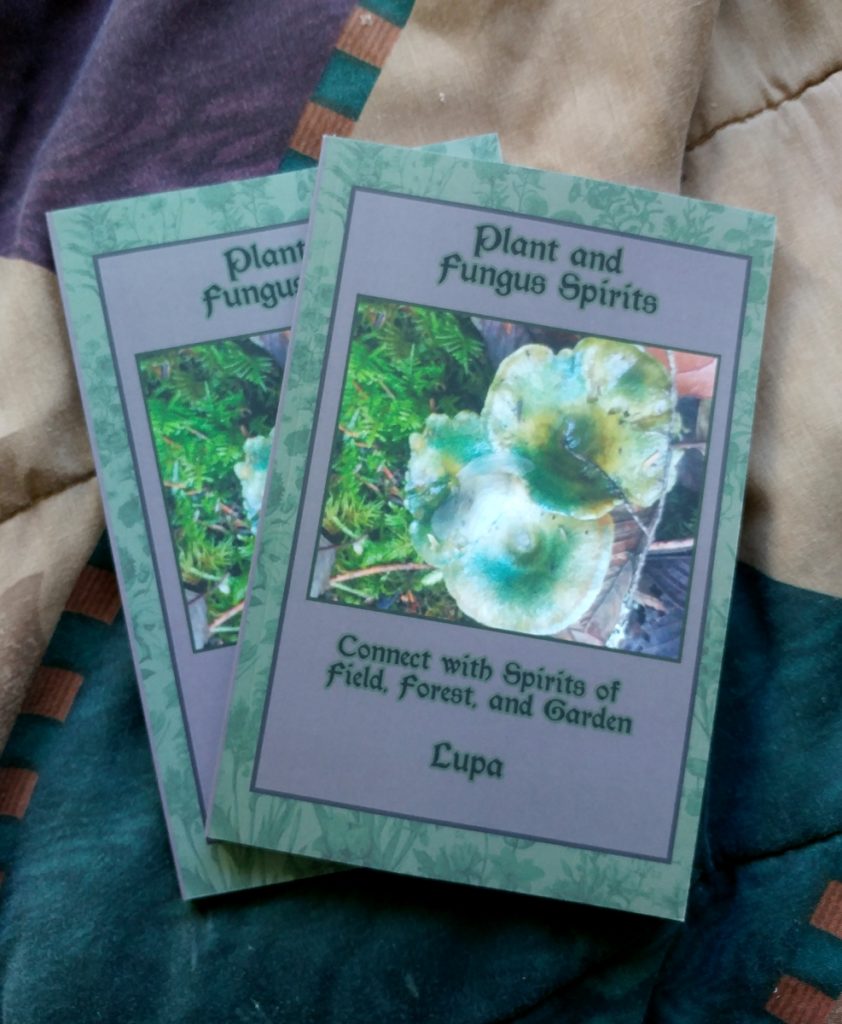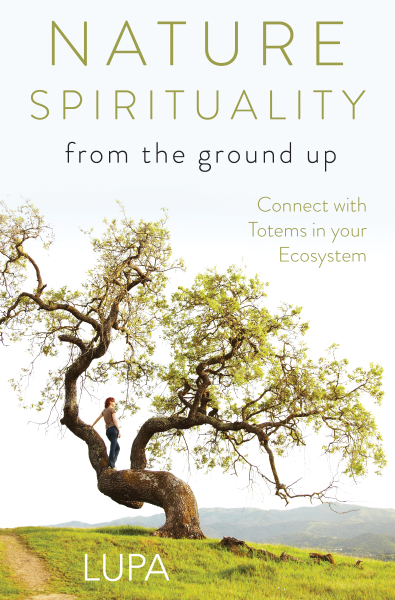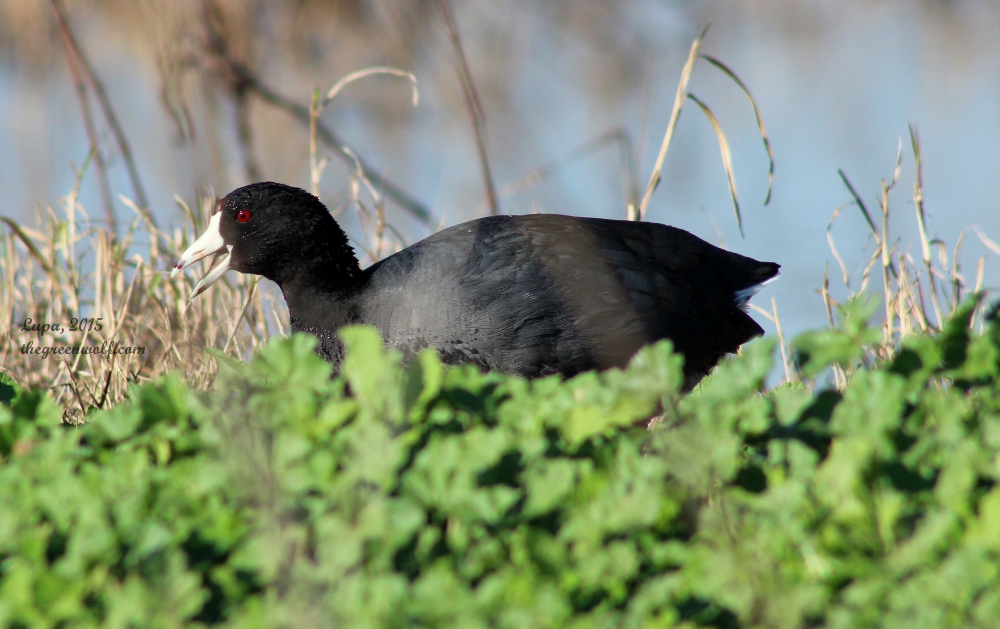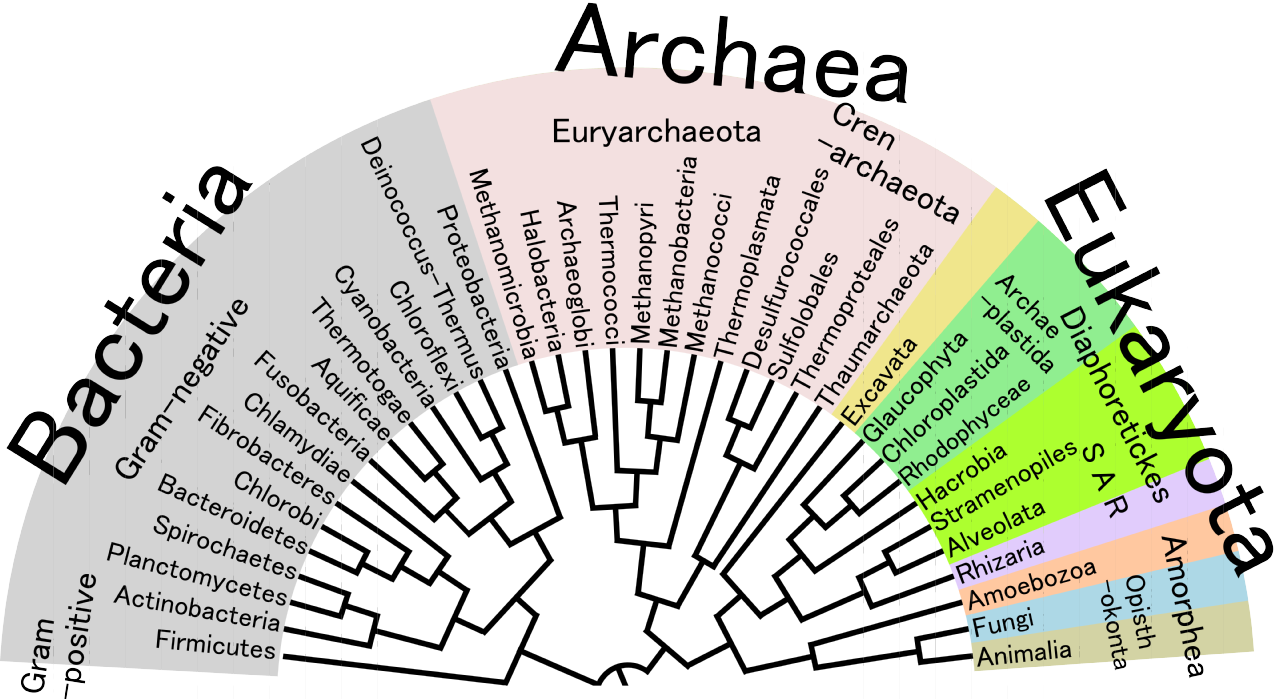Last weekend I presented my Nature Spirituality From the Ground Up workshop at FaerieWorlds. It’s one of my favorite topics, because I’m helping workshop participants connect with their bioregion through the animal, plant, fungus and other totems there. It’s also frustrating as there’s so much material to cover and we’re limited to 90 minutes, plus that particular crowd is especially enthusiastic.
But for the time I have I’m able to watch how other people get their roots into the ground and interact with the nonhuman world around them. Oftentimes it’s the first chance any of us have during a busy festival weekend to stop and notice our surroundings in detail. I’m there as the workshop leader, but I’m always humbled and delighted by the many ways in which the people who join me work–and play–toward that goal of connection.
What I’ve found over the years, both in teaching this particular workshop and others, is that pagans and other spiritual folks most often ally themselves with animals. It’s not surprising; we ourselves are the last remaining species of human ape, and it is easier for us to empathize with our own kingdom, particularly the vertebrate phylum, and especially the classes Mammalia (mammals) and Aves (birds). So we most often allow the animals into our circles and shrines first, and hear their voices over the others.
What I then ask of my participants (and readers) is to go beyond that initial connection. Animal totems do not exist in some void, floating over our heads like helium balloons. Rather they inhabit ecosystems that parallel our own (whether you see these as literal spirit realms, or metaphorical structures.) To travel into these spaces is to brush against the totems of plants and fungi in one’s path, and to tread across the realm of those of soil and stone, and breathe in those of the air. And as here, they all need each other in intricate webs of connection and mutual reliance, though we often typify that as competition.
If you’re at all familiar with my work, you’ll know that I abhor totem dictionaries as anything other than “this is this author’s personal experience with these beings, and your mileage may vary.” When all you do is read the entry in a dictionary and say “Well, that must be what this totem means and what I should learn from it, not only are you being disrespectful to a complex being, but you are also cutting yourself off from a wealth of knowledge and connection, as well as the opportunity to learn what you can give back to that totem. Moreover, you are denying yourself the possibility of working with other totems (animal and otherwise) associated with it and thereby deepening your practice.
A good example is Brown Bear. In more remote areas of the Pacific Northwest, brown bears rely on the salmon runs up the rivers each year for a large portion of the calories they need to get fat enough for hibernation. But the forests also need the salmon, for the bears often eat only the best parts and discard the rest among the trees to decay. This provides the forest with sea-sourced nitrogen and other nutrients that it otherwise wouldn’t have access to. There’s much to be learned just from this one seasonal cycle: brown bears feeding to prepare for winter, salmon swimming to spawn the next generation, river carrying fish to and fro, spruce and fir and cedar taking in the nutrients the salmon gathered from smaller fish in the wide open ocean for years, fungi in the soil breaking the rotting carcasses down so trees may more easily feed, insects and bacteria and other tiny beings feasting as well, both on the salmon remains and the bear dung.
What’s to be learned from that? Well, you could just go with the common totem dictionary keywords associated with Bear, like “strength” and “healing” and try to shoehorn these cycles into that shorthand. Or you could meditate upon the cycles yourself and see what observations you make, and what the relevant totems have to say. For example, Brown Bear and I have had conversations about the gratitude owed to salmon for the vital nutrients they provide, and the fragility of river ecosystems in an age of pollution and dams. We’ve talked about the desperation of bad salmon years, and how in those years every single calorie is needed, and so the trees may go hungry. These are conversations that cannot be pigeonholed into a few keywords.
If there are totems or other nature spirits in your life, have you ever tried asking them who they are most reliant on in their ecosystems? Have you asked them to introduce you to others? How much do you really know about both the physical and spiritual ecosystems they inhabit? It’s less about the individual totems, and more about their relationships and connections, and what physical behaviors and natural history are embodied in their archetypal selves. In the face of that, simple “meanings” seem trite, stereotyped, and limiting.
And it’s an excellent way to make your path both broader and deeper. I have been practicing a neopagan version of totemism for over two decades now, and in that time I have worked with hundreds of totems, from brief encounters to deep, many years-long spiritual relationships. Through them I have been inspired to understand my physical bioregion more deeply, and to visit others that I may delve into their depths. Moreover, I have been compelled to find more ways to give back to the totems and their kin, a necessary reciprocity at a time when even nature based spirituality is all too often human-centered and based on what we can gain. Most importantly, it has gotten me past an animal-centered path, and opened me up to the vibrant variety of beings that have evolved alongside us for millions of years, and the geological, hydrological and other natural phenomena that we all rely on. I’m looking forward to many more years of this practice.
If you’d care to join me and you do not yet have a preferred method of working with these beings, may I recommend trying guided meditation? It’s less intense than journeying, but I’ve used it successfully for many years to visit the totemic ecosystem. You can use the version I have at this old blog post of mine; you don’t always have to go in with a particular totem in mind, and sometimes it’s valuable just to explore this place and see who shows up. But it’s also a good place for totems you already work with to introduce you to others, and show you some of the natural cycles they engage in. You’re welcome to start with an animal or other totem you’re already comfortable with as your initial guide, but be willing to listen to others, even those you may not have initially considered like totems of slime molds or liverworts or archaea.
In addition to that, I strongly suggest studying up on your local bioregion, from the geology to biology to climate and more, all the way from the soil to the sky. Rua Lupa has created a wonderful bioregional quiz on her Ehoah site if you want to get an idea of some of the things you should be trying to find out more about. Nature spirituality needs to be grounded in physical nature itself, and there’s no better way to understand the above than by familiarizing yourself with the below.
Finally, be on the lookout for ways you can give back to the totems and their physical counterparts. Too often we make our nature spirituality about us, and to my mind one of the signs of an advanced practitioner is a deep desire for reciprocity. If you aren’t sure, ask the totems themselves, as their biggest priority is caring for their kin. You also can’t go wrong with improving the habitat around your area by removing litter and pollutants, planting native species, and educating others on the need for health, integral ecosystems.
And feel free to let me know how your work goes; I’m always excited when people start finding their own paths deeper into the totemic ecosystem!
If you liked this post, consider buying a copy of Nature Spirituality From the Ground Up. It includes extensive exercises and supporting material for doing the sort of work that I talk about here. And you’ll make this self-employed author very happy 🙂
Like this:
Like Loading...







